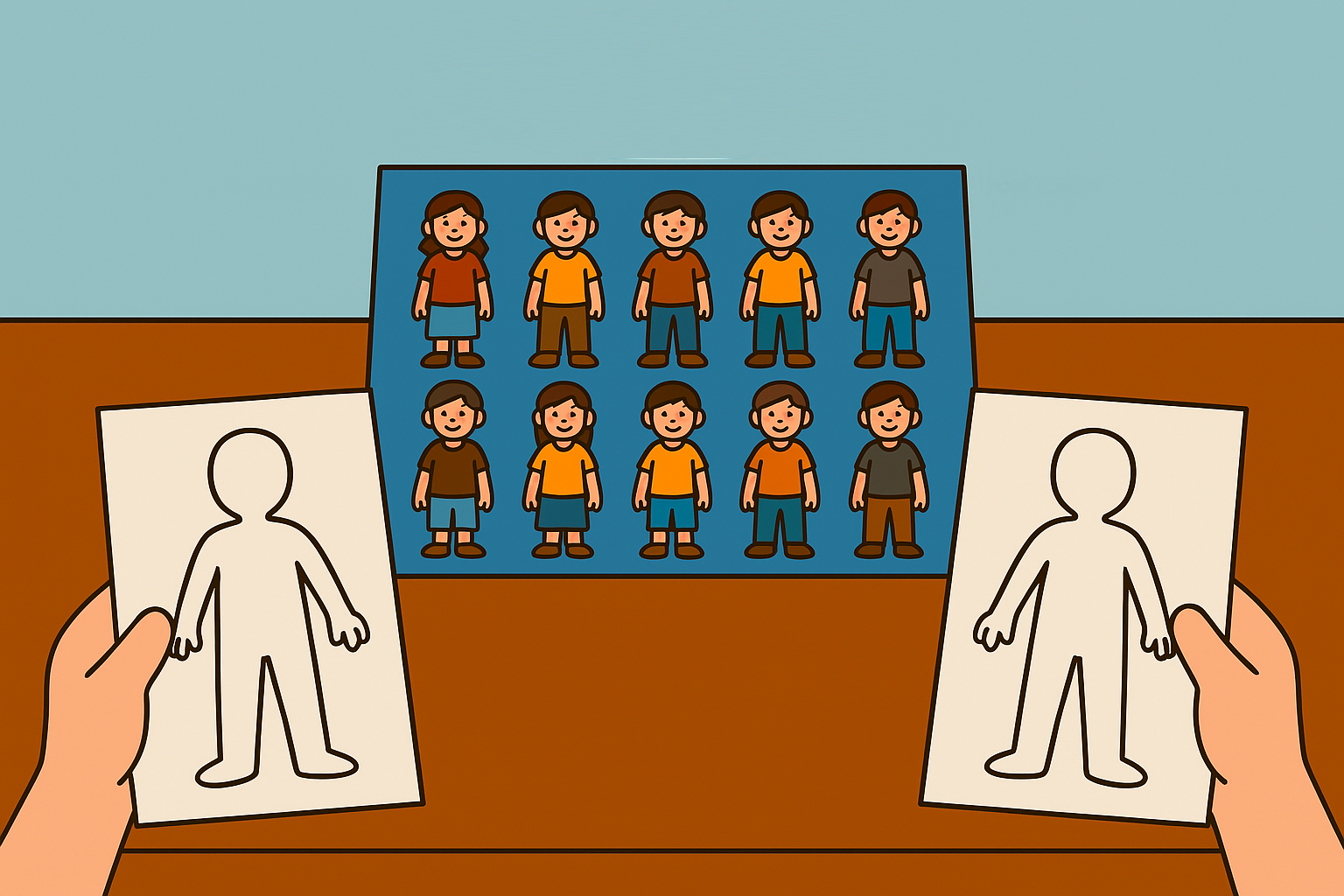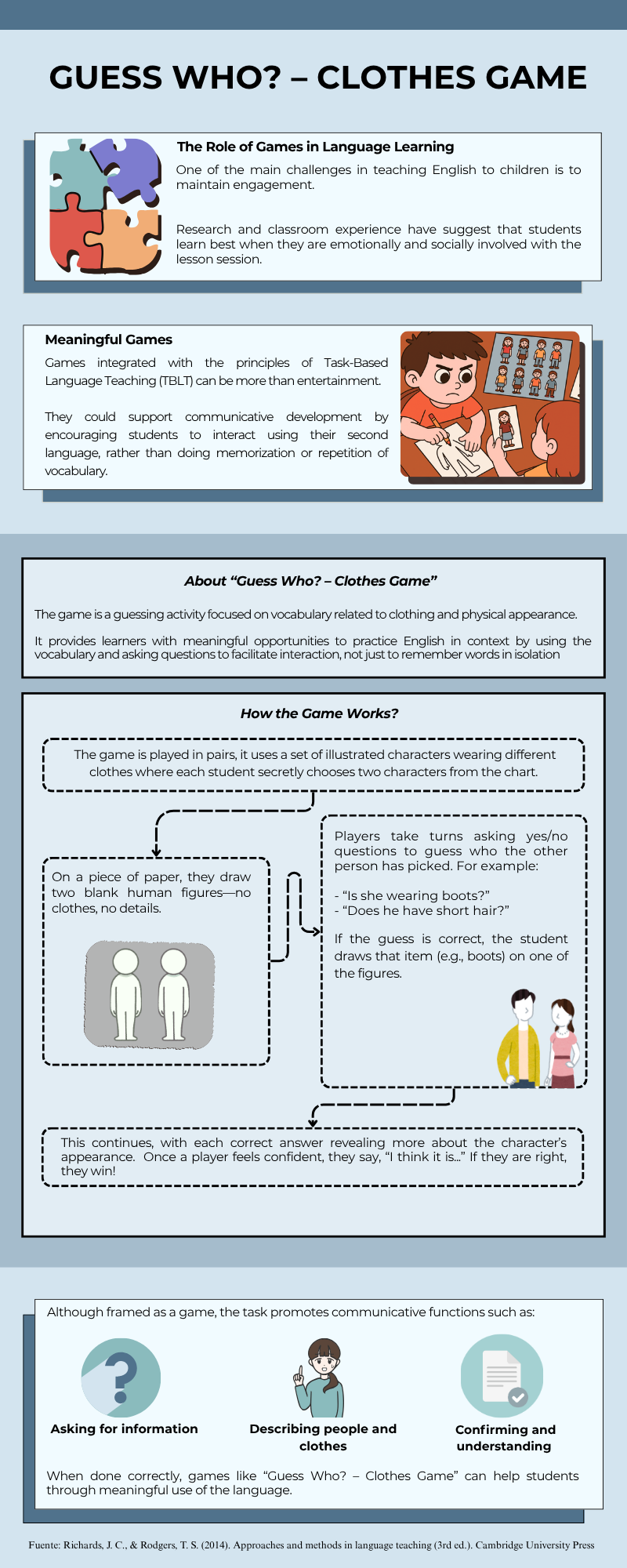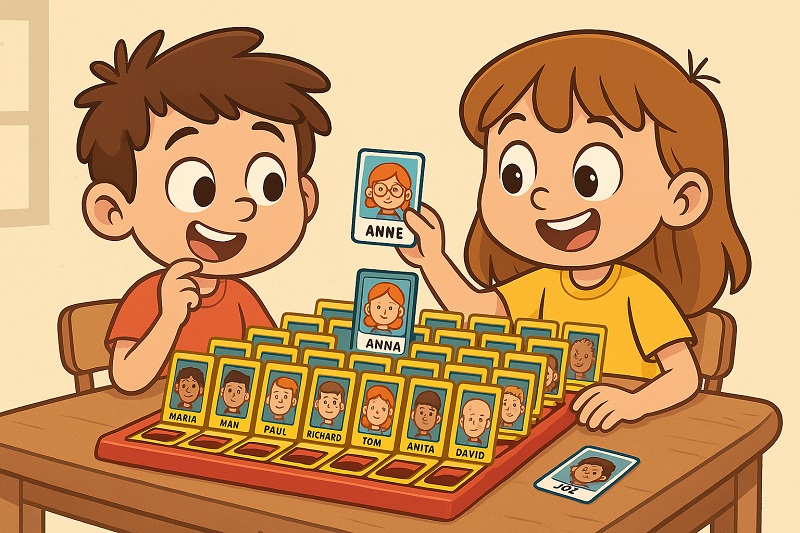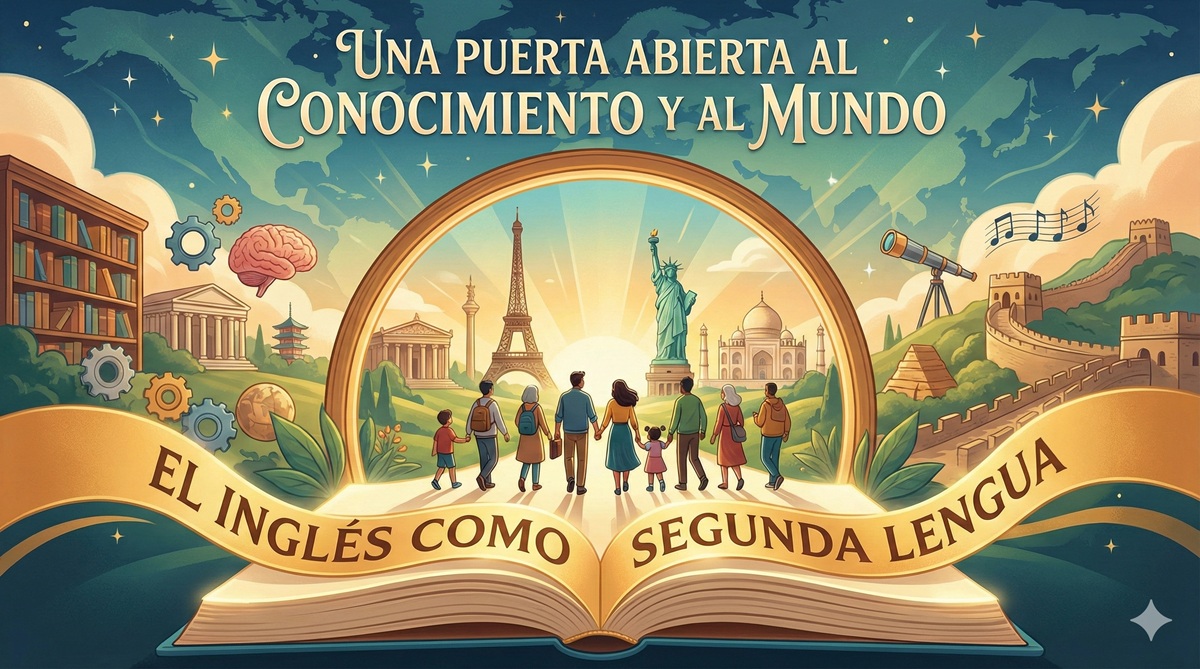One of the main challenges in teaching English to children is to maintain engagement. Research and personal teaching experience have led to the conclusion that students learn best when they are emotionally and socially involved with the lesson session.
Before continuing with your reading, I invite you to watch a quick video about this subject.
Meaningful Games in Language Learning.
Games integrated with the principles of Task-Based Language Teaching (TBLT) can be more than entertainment. They could support communicative development by encouraging students to interact using their second language, rather than doing memorization or repetition of vocabulary.
These types of games allow the students to connect linguistic form (grammar and vocabulary) with communicative function (use of language in real contexts) while also being engaging and offering collaborative learning.

Guess Who? – Clothes Game and How it Works.
This game is communicative classroom activity titled “Guess Who? – Clothes Game.” The game is a guessing activity focused on vocabulary related to clothing and physical appearance. It provides learners with meaningful opportunities to practice English in context by using the vocabulary and asking questions to facilitate interaction, not just to remember words in isolation.
This is a pair-based guessing game where each student selects two illustrated characters in secret and draws two blank outlines on paper.
During the game, the players ask yes/no questions to identify their partner’s characters. For example: “Is she wearing boots?”– “Does he have short hair?”
The correct guesses allow students to add the clothing item or feature to their drawings. The game continues until one player identifies the two characters correctly.

Have you used this type of game?
Interaction activities and vocabulary practice do not have to be boring or repetitive. Although framed as a game, the task promotes communicative functions such as asking for information, describing people and clothes, confirming, and understanding. Thus, when done correctly, they can help students through meaningful use of the language.
To wrap up, I’d love to build a collection of creative classroom activities that spark genuine interaction and meaningful language use. I encourage you to please share any task that has sparked curiosity, communication, or creativity in your students, by clicking here
Here is a helpful infographic that summaries the blog.

Recommended1 dieron "Me gusta"Publicado en Educación, Idiomas



















Comentarios